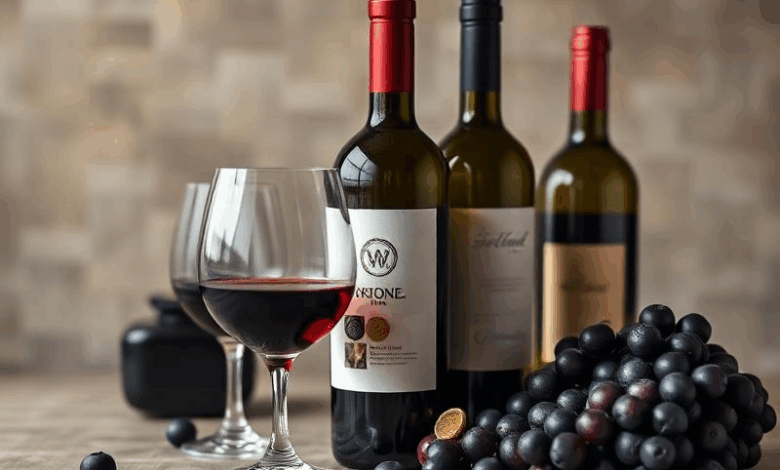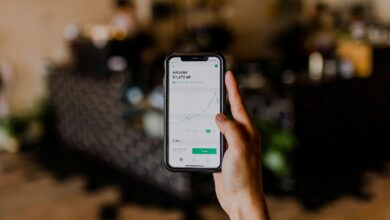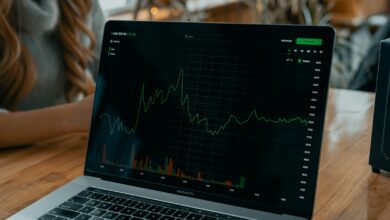Wine investing – luxury collectible strategies

Optimal preservation conditions are fundamental for securing the long-term value of vintage bottles. Controlled storage environments with stable temperature and humidity levels prevent premature aging, ensuring the potential for significant price appreciation over time. Selecting rare vintages from renowned regions enhances portfolio diversification within alternative asset classes.
Acquisition should focus on limited-release labels with established track records in auction performance and secondary markets. Tracking historical sales data reveals patterns of demand elasticity influenced by critical ratings and scarcity, allowing informed decisions that balance risk and return. Monitoring global economic indicators aids in timing purchases to capitalize on market cycles.
Liquidity considerations require understanding distribution channels such as private sales, wine funds, and reputable exchanges specializing in fine beverages. Transparent provenance documentation increases buyer confidence and mitigates fraud risks, contributing to sustainable asset growth. Incorporating expert appraisals supports accurate valuation aligned with current market dynamics.
Wine investing: luxury collectible strategies [Investment Insights investment-insights]
Acquiring rare bottles from renowned vintages offers a tangible asset class that has demonstrated steady appreciation, often outperforming traditional financial instruments during periods of market volatility. Prioritizing provenance and authenticated storage conditions significantly enhances value retention and capital growth potential.
Understanding the nuances of cellar management and climate-controlled environments is paramount for preserving quality and preventing depreciation caused by oxidation or temperature fluctuations. Optimal storage solutions incorporate humidity regulation, consistent temperature control, and minimal light exposure to maintain integrity over extended holding periods.
Market Dynamics and Asset Selection
Analyzing transaction volumes on auction platforms reveals that bottles with established historical significance and limited production runs command premium prices. For example, First Growths from Bordeaux’s 1982 vintage have exhibited compound annual growth rates exceeding 10% over the past two decades, underscoring their status as alternative assets within portfolio diversification frameworks.
Portfolio allocation models favor a mix of mid-range collectibles alongside ultra-rare editions to balance liquidity constraints with long-term appreciation prospects. Emerging regions producing critically acclaimed vintages may offer asymmetric returns but require rigorous due diligence concerning authenticity verification and regional market stability.
- Provenance Verification: Employ blockchain-enabled certification systems to track ownership history and mitigate counterfeiting risks.
- Diversification: Combine classic European origins with New World rarities to spread geopolitical exposure.
- Exit Strategies: Establish clear timelines aligned with market cycles, considering auction fees and transfer logistics.
The integration of decentralized ledgers facilitates transparent title transfers and accelerates transaction settlements while reducing intermediaries’ costs. This innovation aligns with growing regulatory scrutiny emphasizing traceability in luxury asset exchanges.
A comprehensive approach includes evaluating macroeconomic indicators such as currency fluctuations impacting import-export tariffs on rare bottle shipments. The integration of predictive analytics can assist investors in anticipating shifts in demand driven by emerging consumer markets seeking prestige assets as hedges against inflation.
Sophisticated collectors leverage multi-factor strategies incorporating both physical asset management and digital tracking technologies to optimize portfolio performance. As regulatory frameworks evolve globally, adherence to compliance standards will be integral for maintaining asset legitimacy and facilitating seamless cross-border transactions within this niche investment domain.
Identifying High-Value Wine Regions
Regions that consistently produce bottles with notable market appreciation exhibit a combination of historical prestige, controlled production volumes, and stringent quality standards. Bordeaux remains paramount in this regard, with its classified growth estates maintaining steady price growth due to limited supply and global demand. The sub-regions of Pauillac and Saint-Émilion are particularly renowned for their robust secondary market performance, supported by established authentication protocols that enhance asset security.
Burgundy offers an alternative profile characterized by highly fragmented vineyard ownership, resulting in extremely rare cuvées commanding premium valuations. The Côte de Nuits, especially vineyards such as Romanée-Conti, exemplifies scarcity-driven value retention. Investors must consider provenance verification and optimal cellar conditions here, as these factors critically influence long-term bottle integrity and financial returns.
Technical Factors Influencing Region Selection
The terroir’s impact on grape varietal expression plays a pivotal role in the desirability of liquid assets from specific areas. Napa Valley has exhibited consistent appreciation driven by modern viticultural techniques coupled with favorable climatic stability. Its Cabernet Sauvignon bottlings benefit from comprehensive storage infrastructure options that mitigate spoilage risks inherent to collectible commodities.
Emerging regions like Australia’s Barossa Valley present compelling cases for portfolio diversification through alternative assets linked to fine beverages. While price volatility is higher relative to Old World counterparts, increased international recognition and advances in controlled environment storage solutions have improved market confidence. Detailed analytics on vintage quality indices further aid in selecting bottles with superior aging potential.
- Vintage Consistency: Examining climatological data over multiple decades helps forecast maturation trajectories essential for value maximization.
- Regulatory Environment: Legal frameworks governing appellation control ensure authenticity and reduce counterfeiting risks affecting asset liquidity.
- Distribution Networks: Established channels facilitate smoother transactions and accurate pricing benchmarks across markets.
Storage conditions remain a non-negotiable variable impacting physical asset preservation across all geographic zones. Temperature-controlled environments with constant humidity levels prevent oxidative degradation and cork desiccation, directly correlating to sustained or enhanced valuation metrics. Integrating blockchain-based provenance tracking further enhances transparency and trust among high-net-worth collectors focusing on tangible asset classes within the beverage sector.
Assessing Vintage Quality Factors
Prioritizing the assessment of a vintage’s climatic conditions is fundamental when evaluating its potential for appreciation. Detailed meteorological data for the growing season–such as temperature fluctuations, rainfall patterns, and sunlight exposure–directly influence grape development and ultimately, the profile of the final product. For instance, vintages from Bordeaux in 2009 and 2010 demonstrated exceptional balance due to optimal ripening periods supported by consistent warmth and minimal precipitation. These parameters serve as quantitative markers for collectors seeking tangible metrics beyond subjective tasting notes.
Storage environment variables must be integrated into valuation models since they significantly affect long-term preservation and market performance. Controlled temperature settings (typically between 12-15°C), humidity levels around 70%, and protection from light exposure are critical factors in mitigating degradation risks such as oxidation or cork taint. Case studies involving vertical collections stored in professional cellars versus suboptimal domestic conditions reveal marked discrepancies in secondary market pricing trajectories, underscoring storage’s role as a determinant of asset integrity.
Technical Evaluation Frameworks
The utilization of chemical analysis techniques–including phenolic content assays and acidity measurements–provides objective data points supplementing traditional organoleptic evaluation. Research comparing vintages with elevated tannin structures against those with higher sugar concentrations reveals correlations with aging potential and market demand elasticity. For example, Nebbiolo-based vintages rich in anthocyanins typically exhibit prolonged maturation curves aligning with sustained price growth over decades.
An integrative approach combining provenance verification through blockchain-enabled tracking systems alongside conventional appraisal enhances transparency and reduces counterfeiting risks inherent to rare bottles. This alternative authentication method facilitates comprehensive lifecycle documentation–from vineyard practices to distribution channels–empowering stakeholders to make informed acquisition decisions grounded in verifiable origin data rather than speculative narratives.
Storage Impact on Wine Value
Proper preservation conditions significantly influence the appreciation trajectory of vintage bottles. Controlled environments with stable temperature (12-14°C), relative humidity around 70%, and minimal light exposure prevent premature oxidation and cork degradation, which directly affect market valuations. Data from auction houses indicate that bottles stored under optimal cellar conditions can command premiums up to 30% higher compared to those kept in suboptimal settings.
Alternative asset portfolios incorporating rare vintages must prioritize storage quality as a key determinant of potential return. Unregulated environments accelerate chemical alterations such as esterification and phenolic breakdown, diminishing flavor profiles and collector interest. Consequently, long-term value retention is closely tied to meticulous climate control and handling protocols.
Technical Aspects Influencing Bottle Integrity
The interaction between micro-oxygenation through natural corks and ambient conditions dictates aging kinetics. Excessive humidity may encourage mold growth on labels, negatively impacting aesthetics crucial for resale. Conversely, dry atmospheres risk cork shrinkage, allowing air ingress that triggers premature spoilage processes. Monitoring via hygrometers and thermometers integrated into cellar management systems provides quantitative data supporting consistent storage quality.
Case studies reveal that investment-grade vintages from Bordeaux or Burgundy regions stored in professional facilities exhibit more uniform maturation patterns, enhancing predictability of appreciation curves. Blockchain-verified provenance tracking increasingly integrates storage condition logs to authenticate bottle histories, further bolstering confidence among high-net-worth collectors.
Comparative analyses highlight that fluctuating temperatures above 20°C substantially reduce expected lifespan by accelerating microbial activity within the liquid matrix. This deterioration manifests in lowered auction results and diminished secondary market liquidity. Strategic allocation towards professionally monitored vaults offers mitigation against such risks, albeit with increased custody costs factored into overall yield calculations.
In summary, the intersection of environmental science and asset management underscores the critical role of tailored preservation methods in securing both intrinsic quality and market desirability of aged vintages. Prospective buyers should rigorously evaluate storage provenance alongside vintage pedigree when constructing diversified portfolios aimed at sustained capital appreciation.
Optimal Timing for Maximizing Returns on Vintage Liquid Assets
Strategically selecting the sale window for aged rare vintages is paramount to capitalizing on their market appreciation. Precise timing leverages fluctuations in demand driven by economic cycles, regulatory shifts, and emerging consumer preferences within alternative asset classes.
Historical transaction data indicates that aligning dispositions with peaks in scarcity perception and auction performance can increase yields by 15-25% compared to arbitrary liquidation points. Incorporating blockchain-based provenance verification further enhances asset liquidity and pricing transparency.
Analytical Insights and Forward-Looking Considerations
The interplay between maturation curves of premium bottles and macroeconomic indicators necessitates a dynamic approach rather than fixed-term horizons. For example, vintages demonstrating accelerated organoleptic development often experience value inflection prior to traditional benchmarks, suggesting adaptive exit tactics.
- Market Sentiment Analysis: Monitoring indices tied to collectible commodities alongside currency strength can predict optimal divestment periods.
- Technological Integration: Utilizing decentralized ledgers ensures immutable records, reducing counterparty risk and facilitating fractional ownership models that broaden investor access.
- Diversification Synergies: Positioning fine liquid assets alongside crypto portfolios provides asymmetric risk mitigation amid global financial volatility.
Anticipated advancements in AI-driven valuation algorithms will refine predictive accuracy for appreciation trajectories, enabling stakeholders to execute sales at micro-optimal intervals rather than relying on conventional timing heuristics. Furthermore, evolving cross-border trade regulations may introduce new arbitrage opportunities for liquid collectibles secured through tokenization platforms.
Navigating the complexities of temporal asset disposition requires an integrative framework combining empirical market signals with emerging technological enablers. This approach not only preserves intrinsic value but also exploits niche arbitrage windows unavailable through traditional methods. Continuous monitoring paired with agile execution remains critical as these vintage treasures gain prominence within diversified portfolios seeking tangible inflation hedges and unique yield vectors.






